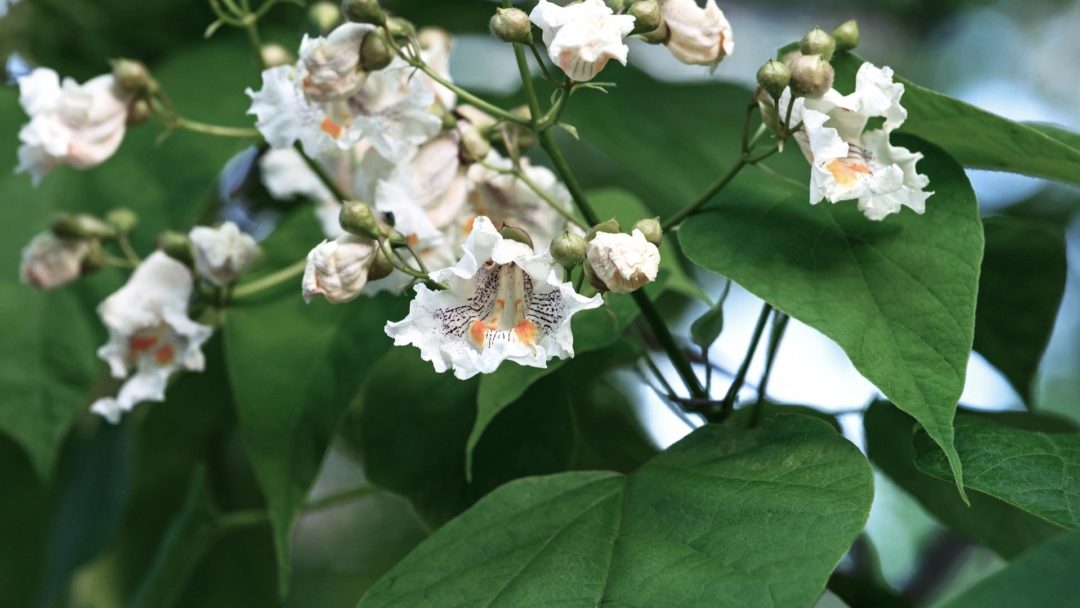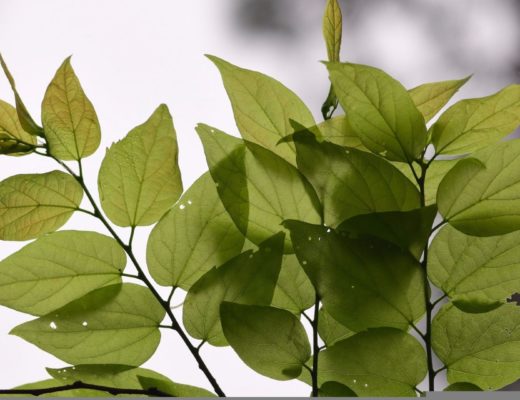Catalpa speciosa
Catalpa is a hard tree to overlook. Trumpet-shaped flowers herald its awakening for the summer and are soon followed by some of the largest leaves in the northern hemisphere. Elephant ears would not be too far off the mark for their description. Finally come the seed pods — bean-like in shape draping the tree like green tinsel.
There are two key species of catalpa in the United States — southern and northern catalpa. Originally, southern catalpa was more widespread, but when the pioneers discovered the northern species in a very limited area of the Midwest, it didn’t take long to realize that this one grew larger and could tolerate colder winters better. Thanks to its fast growth and rot-resistant wood — and a promotional campaign by Nebraska governor Robert W. Furnas, a contemporary of J. Sterling Morton — farmers began planting it for fence posts and to sell as railroad ties. Today, as a shade tree, it is widely distributed in parks and yards throughout the country.
Catalpa is not a tidy tree. Maintenance people complain about cleaning up after it when the flower petals, leaves, and seed pods drop. But that may be a small price to pay for this tree’s tolerance to a wide range of growing conditions, its dense shade, and the interest it adds to the landscape. Guy Sternberg, author of Native Trees for North American Landscapes, has said that the old trees of this species, “become rustic and picturesque, their weathered crowns testifying to the passage of previous wind storms, and would look very much at home towering over Boot Hill on Halloween.”
Whether young and vigorous or old and stagnated, catalpa is a tree in the landscape that is difficult not to notice and enjoy.
What’s in a Name?
The common names for catalpa are many and colorful. Some of these include Johnny smoker tree, Linden log tree, cigar tree, stogie tree, bean tree, western catalpa, hardy catalpa, Catawba, caterpillar tree, and fish-bait tree.
The scientific name makes less sense. The genus is the same as the common name, Catalpa, and comes from the name that Cherokee Indians used for this tree, Catawba. The species name, speciosa, is from the Latin for — not surprisingly — species. The “osa” part is from osus, or “full of,” said to be in reference to its showy flowers.
In the Landscape
The catalpa tree is a tree that demands your attention. White, showy flowers, giant heart-shaped leaves and dangling bean-like seed pods make is a great ornamental tree. It reaches up to 60 feet in urban settings and grows well in a wide range of soils (hardiness zones 4-8).
While not ideal for every location, this unique and hardy tree is a fast grower that finds a home in parks and yards throughout the country.



